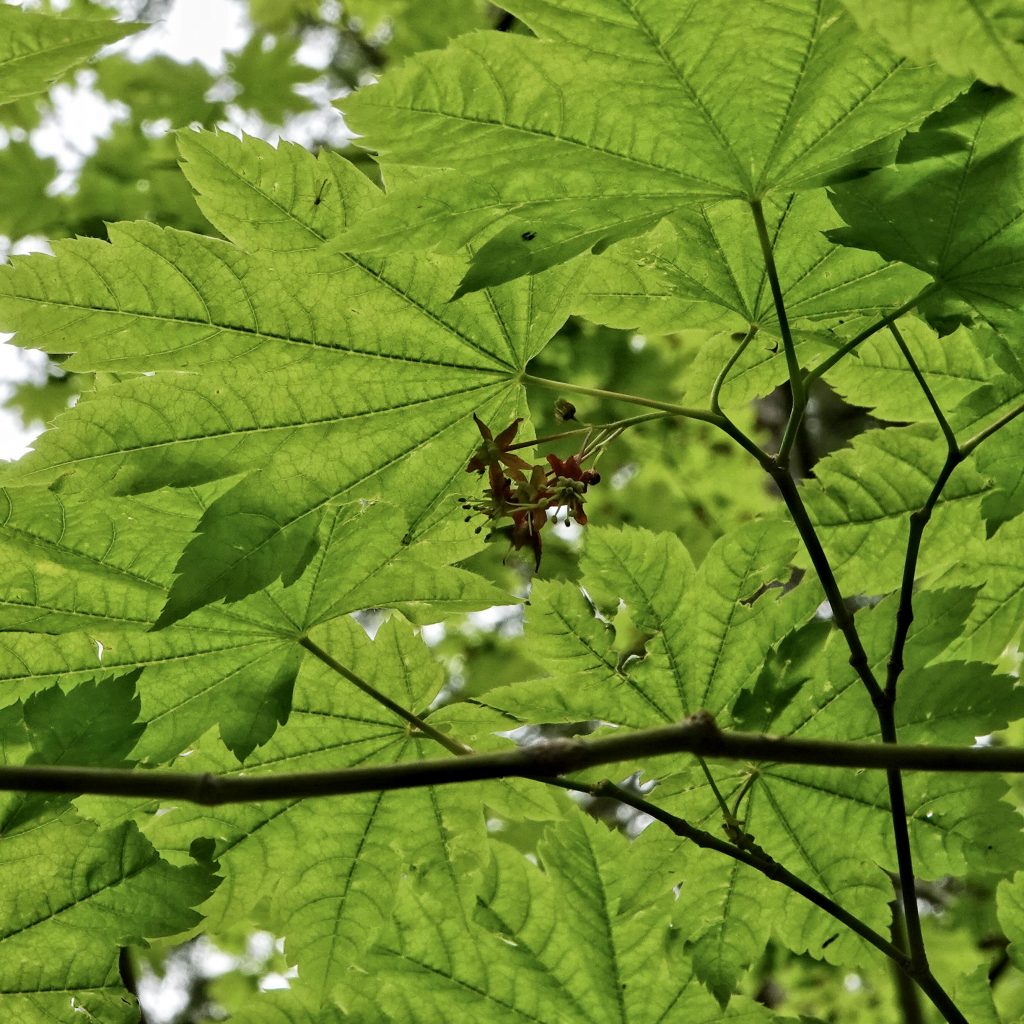
Bigleaf Maple (Acer macrophyllum) get all of the press because they are huge, beautiful, shade providing, moss and lichen and licorice fern covered trees that are a substantial habitat unto themselves, but their understory cousins Vine Maple (Acer circinatum) are an almost equally important component of a healthy mixed forest. They provide food for dozens of invertebrates, as well as browse for various mammals, and cover for prey species. Vine maple is more closely related to the Acer palmatum clade of maples in Asia than it is to the other maples of our region. Like other maples they have samaras, seeds that are contained at the base of a wing, which twirl down when ripe, often filling the air during the blustery days of fall.
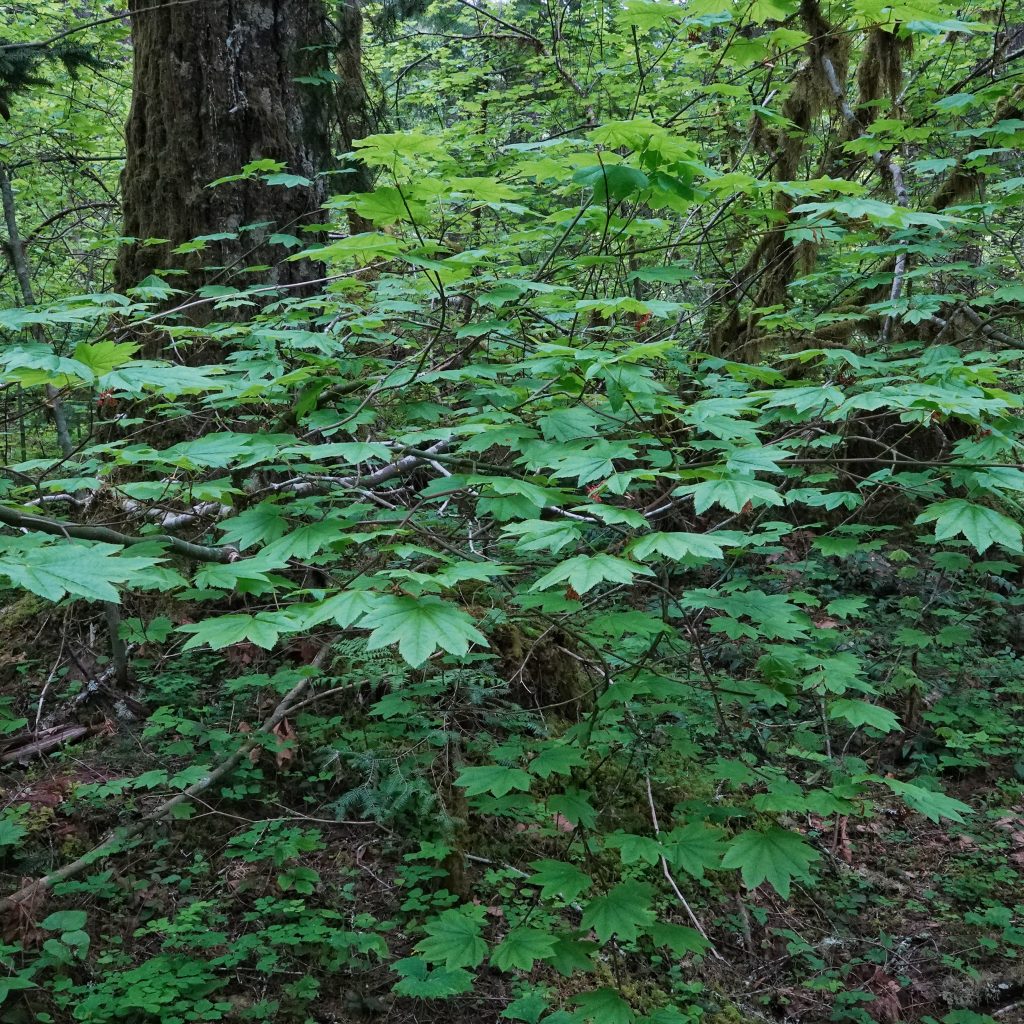
I must admit to having had something of a love/frustration relationship with Vine Maple in my former days of traveling cross country in the woods and avoiding trails, because they are often a sprawling tree with thin branches that may intertwine with conspecifics and other shrubs (which is where it gets the name Vine Maple), and a dense thicket of Vine Maple, hazelnut, and alder is virtually impenetrable. Add some blackberries to the mix (a very common thicket partner in the lowlands of sw Washington) and you could bleed to death before reaching the other side.
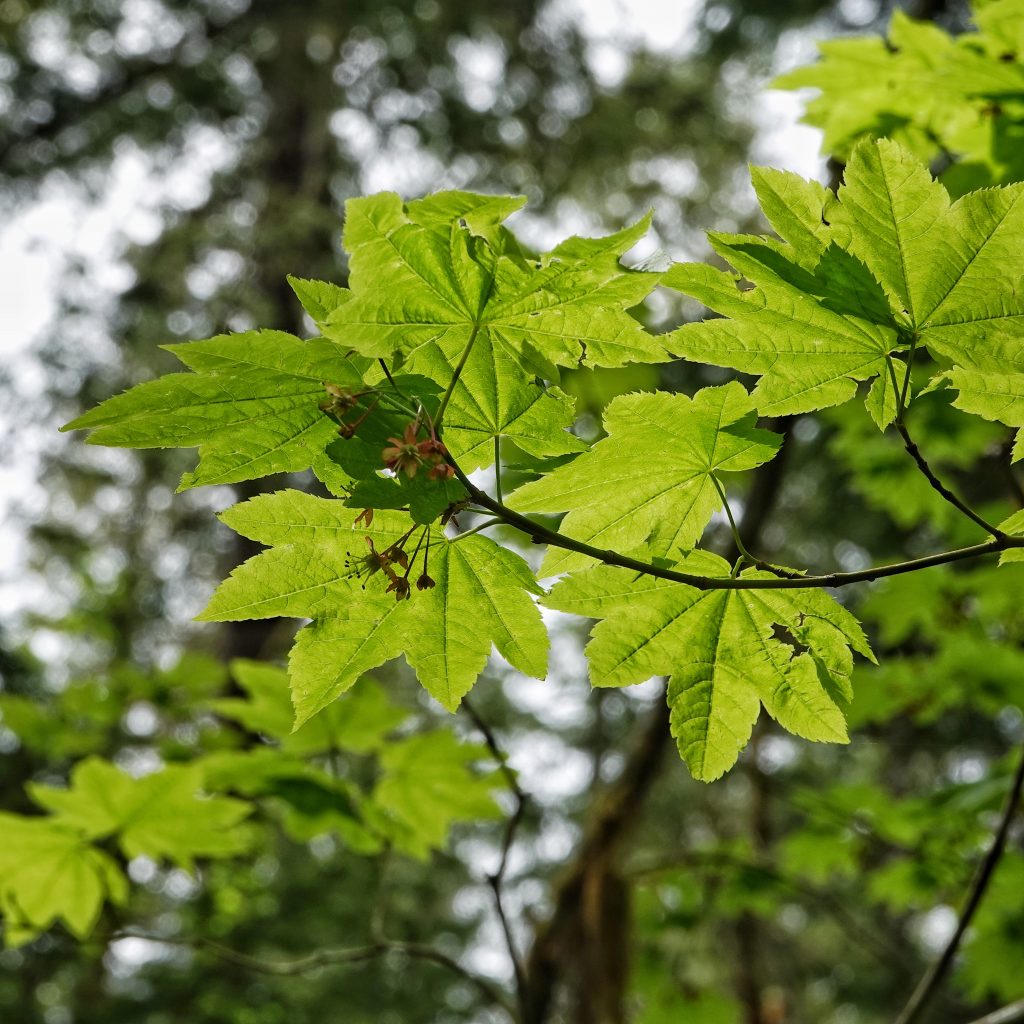
Still, now that my brush-busting days are mostly over (and when I do leave trails I move at a snails pace, using bug-spotting as an excuse for my simple lack of vitality), I’ve grown very fond of vine maple. I don’t know if it’s the sweet sap on the leaves or if they’re merely a convenient landing strip, but it’s rare that even a cursory examination of their leaves fails to turn up a bug or ten. One the day these photos were taken I found 2 species of Syneta beetles, numerous weevils, crane flies, syrphid flies, a couple bumble bees, spiders, aphids, and my first ever scale insect, an ensign scale I’m dying to profile, if I could just get a confirmation on its genus.
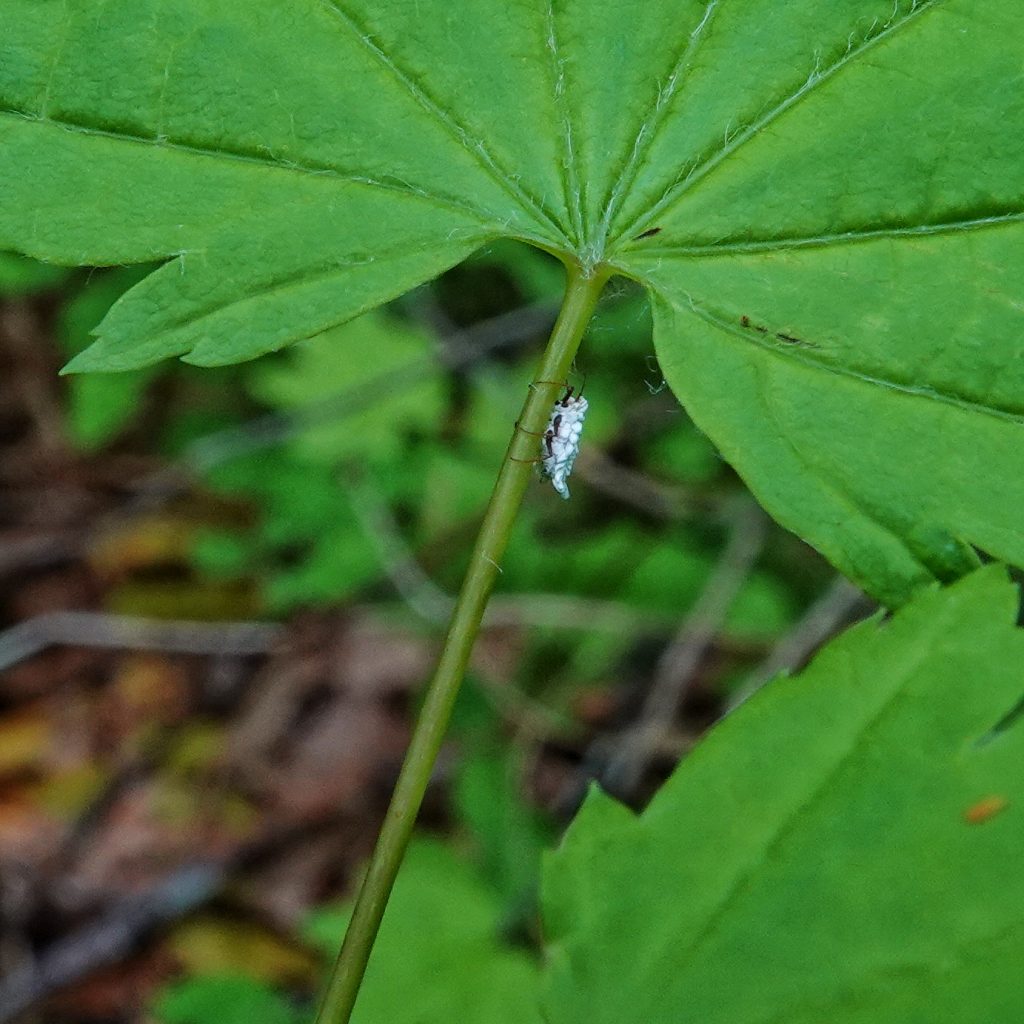
The indigenous people of the PNW had a multiplicity of uses for this plant. Besides eating the sap, both fresh and dried (it is, after all, a maple), they treated polio and dysentery with a mixture of its charcoal, and water and brown sugar (the wood for these therapies had to be harvested in the early morning from the sunrise portion of the tree). But where it really shined was in the utilitarian properties of the wood. They made everything from fish traps, snowshoe frames, bows and arrows, to furniture, salmon tongs, stir paddles, implement handles, baskets, and oil containers with the branches, and used poles made from the trunks to hold down roofing. They also used the charcoal mixed with oil for black paint, and the branches were ‘used by women as love medicine’, although I’m clueless as to how that worked.
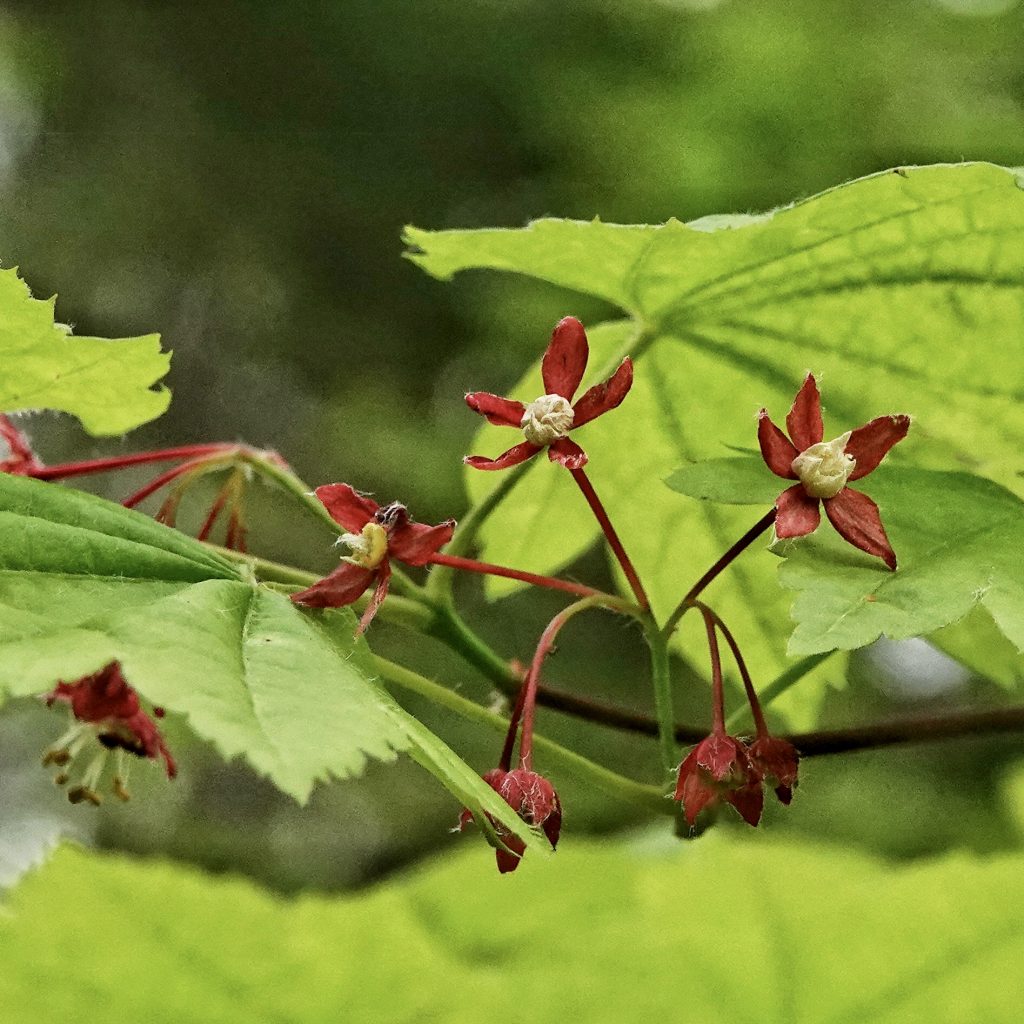
Description-Small (up to 25’ high but usually less than 15’) tree or shrub with multiple spreading trunks and thin, sprawling branches; leaves are 1-2.5” in diameter, opposite, roundish, with 7-9 pointed lobes; flowers small, with red sepals longer than the white petals, in flattened clusters; paired seeds in the relatively hairless samaras.
Similar species–Acer macrophyllum is much larger, with much larger, 5 lobed leaves; A. glabrum has leaves with 3-5 lobes; often intertwined with hazelnuts, which have wrinkled, toothed leaves, without lobes.
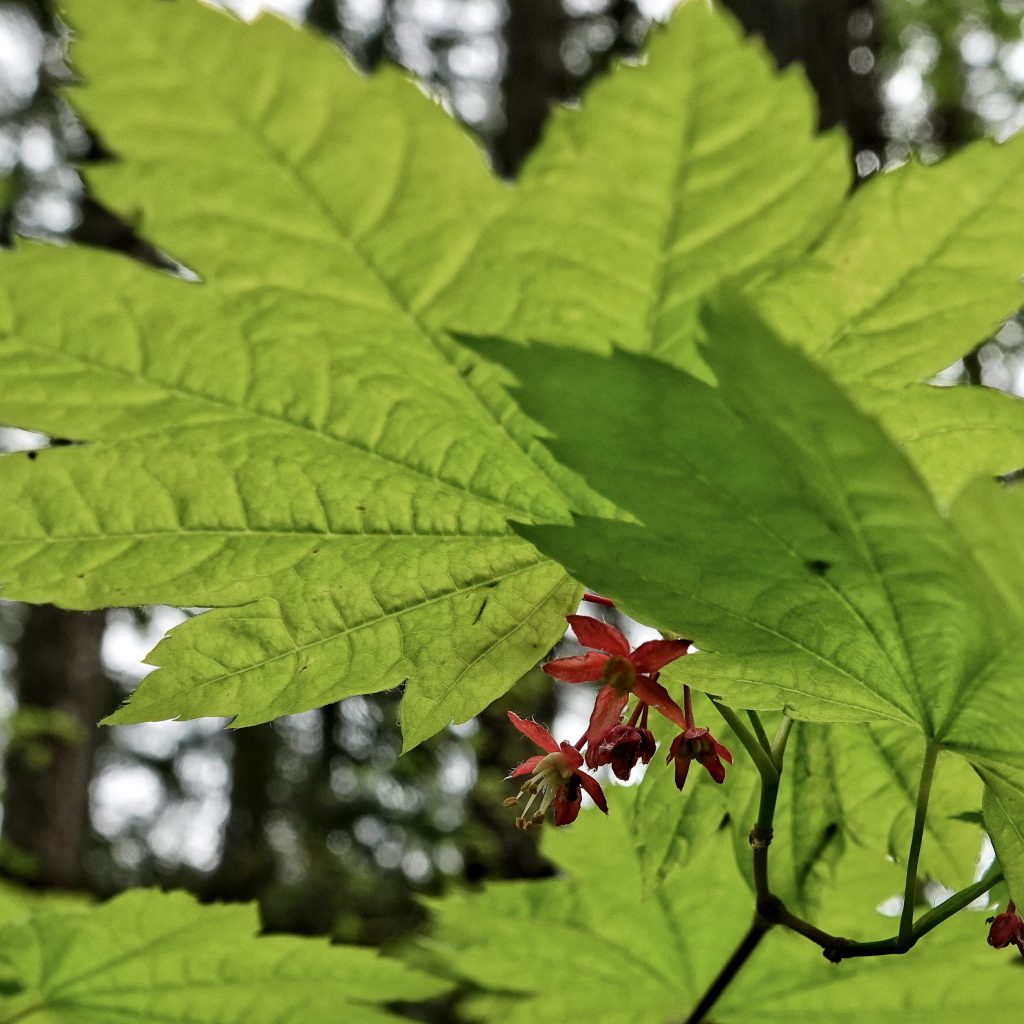
Habitat-Primarily an understory tree in moist to mesic conifer and mixed forests, though sometimes found in fairly open areas surrounded by forests, up to 5,000’.
Range-Native to the PNW, and found from the east slope of the Cascades to the Pacific Ocean.
Reproductive timing-Flowers March to June.
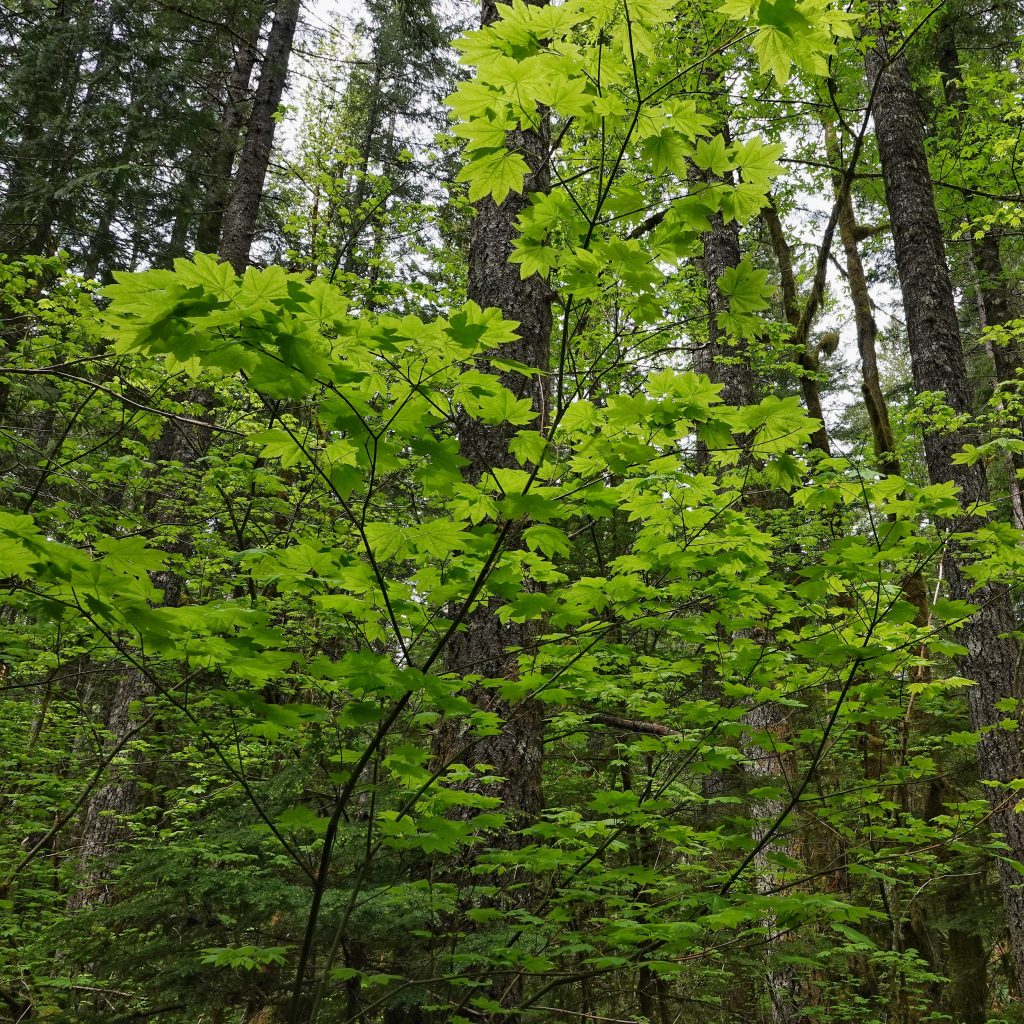
Eaten by– Utilized as a larval host by the stink bug Brochymena quadripustulata, the leaf beetle Syneta albida, the moths Caloptilia acerifoliella, Olethreutes deprecatorius, Archips argyrospilus, Agrochola decipiens, Acronicta funeralis, Lophocampa maculata, Anagoga occiduaria, Campaea perlata, Erannis tiliaria, Eupithecia misturata, Iridopsis emasculata, Amphipyra pyramidoides, Aseptis binotata, Lithophane georgii and many, many more; my friend Michael Palmer has found Marmara spp. moths mining their bark; deer and elk are fond of its summer foliage; buds, flowers, and seeds are consumed by many birds, squirrels, chipmunks, and other rodents.
Etymology of names–Acer is from the Latin word for maple tree. The specific epithet circinatum is from the Latin word for ‘circular’, and refers to the rounded shape of the leaf.
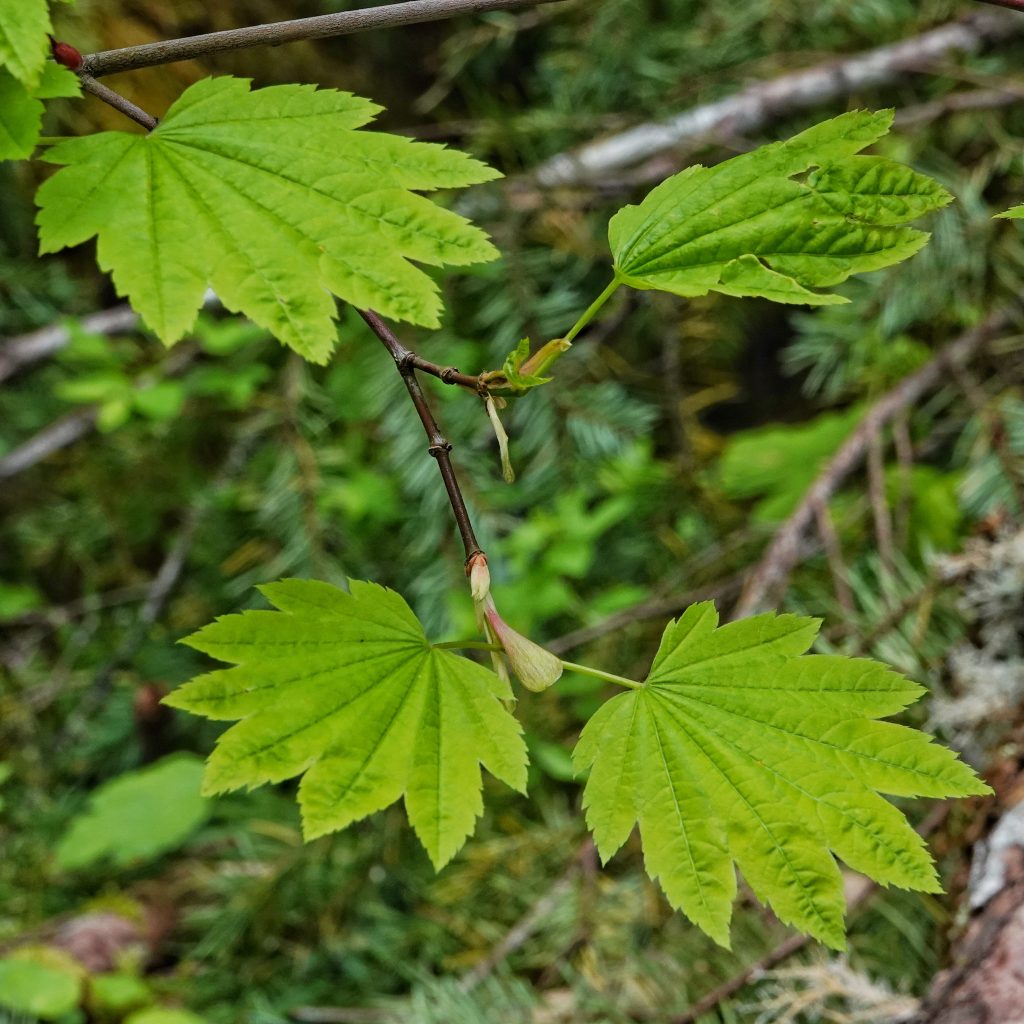
http://nativeplantspnw.com/vine-maple-acer-circinatum/
http://linnet.geog.ubc.ca/Atlas/Atlas.aspx?sciname=Acer%20circinatum
BRIT – Native American Ethnobotany Database
https://calscape.org/Acer-circinatum-(Vine-Maple)?srchcr=sc593bb71a397d5
https://www.wnps.org/native-plant-directory/2:acer-circinatum
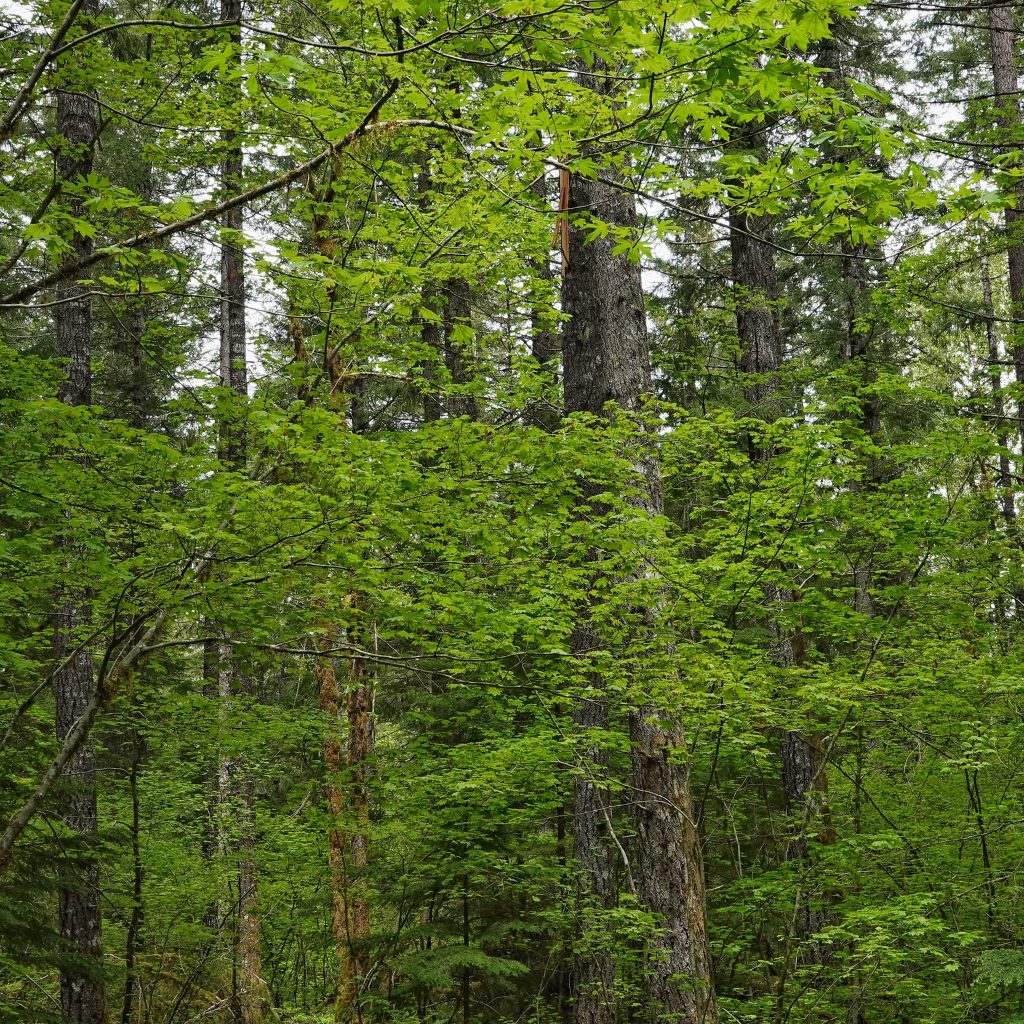
Interesting and enjoyable read. I learned a lot of new things.. despite already being an enthusiast of this maple. I notice that I’ve had a lot of Leafcutter Bee holes on leaves in years past and expect I will see that again this year. Thanks.
Thank you for your appreciation, Jackie!
This helped me identify an upstart in our forest understory I’ve been wondering about. It just sprouted out of nowhere. We are seeing many new plant species with the decline in our native deer population. While I miss some of the deer, I’m appreciative of the added plant diversity. Thank you!
Thanks for your appreciation, Cynthia! Why are your deer declining? The rural and suburban (and even urban) deer population of Clark County is growing rapidly, and I routinely see deer now in places I never saw them 30-40 years ago.
You know of what you speak! When it comes to walking through dense thicket, your legs covered in scratches & blood so many times! & the scars to prove it! 😏
Great post. Thanks
Thanks for your appreciation, Bonnie!